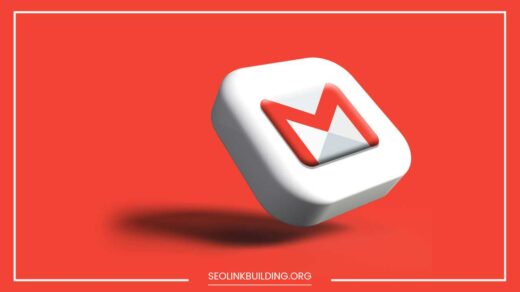Who Are You Blogging for? Knowing Your Audience

Who Are You Blogging For? Knowing Your Audience
Ever pour your heart and soul into a blog post, only to be met with crickets? You crafted compelling content, hit publish with pride, and then… radio silence. It can be disheartening. But before you abandon your blog or question your writing chops, consider this: Did you identify your target audience?
Knowing who you’re blogging for is the cornerstone of successful content creation. It’s the difference between shouting into the void and sparking meaningful conversations with a dedicated readership.
This post will delve into the importance of audience awareness, equip you with strategies to define your ideal reader, and show you how to tailor your content for maximum impact.
Why Knowing Your Audience Matters: Beyond Engagement
Imagine walking into a room full of people with vastly different interests. You could talk about astrophysics, but most wouldn’t understand. You could discuss the latest celebrity gossip, but some might not care.
The key to connecting with an audience is speaking their language, addressing their needs, and offering solutions to their problems.
Here’s how understanding your audience benefits your blog beyond just increasing engagement:
-
Brand Building and Authority: When you consistently create content that resonates with your target audience, you establish yourself as a trusted authority in your niche. This builds brand loyalty and encourages readers to return for future insights and advice.
-
Content Strategy and Ideation: Defining your audience gives your content strategy direction. You can identify trending topics relevant to their interests and tailor your blog posts to current events or industry discussions. This ensures a steady stream of fresh, relevant content that keeps readers engaged.
-
Monetization Opportunities: A well-defined audience allows you to explore targeted advertising and affiliate marketing opportunities. By understanding your readers’ needs and preferences, you can partner with brands that offer relevant products or services, creating a win-win situation for you, your audience, and the partnering brands.
-
Building a Community: Knowing your audience fosters a sense of community around your blog. When readers feel like you’re speaking directly to them, they’re more likely to comment, share your content, and engage in discussions. This creates a vibrant online space where your audience can connect with each other and feel like part of something bigger.
Beyond Demographics: Crafting Rich Buyer Personas
Think of your ideal reader as a real person with a specific set of characteristics. This isn’t about creating a generic demographic profile; it’s about understanding their motivations, challenges, online behavior, and even their voice. Here’s how to create a rich buyer persona for your blog:
-
Beyond the Niche: While your niche provides a starting point, delve deeper. Explore the sub-niches within your broader topic. Are you writing about baking? Do you focus on healthy alternatives, artisanal breads, or quick and easy desserts for busy families? Understanding sub-niches helps refine your target audience.
-
Psychographics: Demographics are a starting point, but psychographics paint a more vivid picture. Consider your ideal reader’s personality traits, values, and lifestyle choices. Are they environmentally conscious? Do they value convenience or are they willing to spend time on intricate recipes?
-
Media Consumption Habits: Where does your target audience get their information? Do they rely on social media for inspiration, subscribe to industry publications, or frequent online forums for discussions? Understanding their media diet helps you reach them in the right places.
-
Content Preferences: How does your target audience prefer to consume information? Do they favor long-form, in-depth articles, or do they crave bite-sized content like listicles or infographics? Knowing their preferences allows you to tailor your content format for maximum impact.
-
Voice and Communication Style: What kind of language resonates with your audience? Are they looking for a formal and authoritative voice, or do they prefer a casual and conversational tone? Aligning your voice with theirs fosters a sense of connection.
Here’s an example of a buyer persona for a baking blog:
- Name: Sarah, 32
- Occupation: Marketing Manager (Busy schedule, limited time for baking)
- Location: Suburban area (Easy access to grocery stores)
- Interests: Baking for friends and family, trying new recipes (but with a focus on healthy alternatives), using seasonal ingredients
- Challenges: Wants to improve her decorating skills, craves convenience but prioritizes healthy ingredients over processed foods
- Online Behavior: Follows several baking blogs and healthy recipe websites on social media (Instagram, Pinterest), reads reviews of baking products on cooking blogs
- Media Consumption: Subscribes to a bi-monthly healthy living magazine, listens to podcasts about healthy meal planning
- Content Preferences: Enjoys visually appealing content with high-quality recipe photos, appreciates step-by-step recipe videos with troubleshooting tips, finds meal prep guides and healthy ingredient substitutions helpful, and craves content that is informative and engaging, allowing them to learn and experiment in the kitchen with confidence.
Tailoring Your Content to Resonate with Your Audience: Beyond the Basics
Now that you have a rich understanding of your ideal reader, it’s time to craft content that truly resonates with them. Here are some effective strategies that go beyond the basics:
-
Content Series and Thematic Consistency: Develop content series that tackle specific challenges or interests within your niche. This allows readers to follow a narrative and delve deeper into a particular topic. For example, a baking blog could create a series on “Healthy Holiday Baking” or “Mastering Bread Making Techniques.”
-
Storytelling and Emotional Connection: People connect with stories. Weave narratives into your content to illustrate concepts, showcase the benefits of your solutions, and evoke emotions in your readers. Share personal anecdotes, success stories from your audience, or historical accounts related to your niche.
-
Anticipate Needs and Challenges: Don’t just react to your audience’s existing needs. Conduct surveys, host Q&A sessions, or analyze website traffic to identify emerging challenges and questions. This allows you to create content that addresses their future needs and positions you as a thought leader.
-
Leverage Data and Analytics: Website analytics tools provide valuable insights into your audience’s behavior. Track which content performs well, what topics resonate most, and where your traffic originates. Use this data to refine your content strategy and tailor future posts to what your audience actively seeks.
-
Embrace User-Generated Content: Encourage your audience to participate in the conversation. Host recipe contests, invite guest blog posts, or run social media campaigns that encourage readers to share their experiences. This fosters a sense of community and provides valuable content that resonates with your existing audience.
Beyond the Blog: Expanding Your Reach and Audience Engagement
Blogging is a fantastic platform, but it’s not the only way to connect with your audience. Here are some strategies to expand your reach and keep your audience engaged:
-
Guest Blogging and Collaborations: Partner with other bloggers or websites in your niche. Guest blogging allows you to reach a new audience while offering valuable content to another community. Collaborate on projects like ebooks, webinars, or online courses to combine expertise and broaden your reach.
-
Social Media Engagement: Social media platforms provide excellent opportunities to connect with your audience beyond the blog. Share snippets of your content, host live Q&A sessions, and participate in relevant online communities. Encourage discussions and respond to comments to foster a sense of interaction.
-
Email Marketing: Building an email list allows you to nurture relationships with your audience. Send regular newsletters with exclusive content, early access to new blog posts, or special offers. Segment your email list to deliver targeted content based on your readers’ interests.
-
Online Courses and Workshops: Offer online courses or workshops that delve deeper into specific topics within your niche. This is a fantastic way to monetize your knowledge, provide additional value to your audience, and establish yourself as an expert.
-
Build a Membership Community: Create a premium membership community where your most engaged readers can access exclusive content, participate in discussions, and receive personalized guidance. This fosters loyalty, generates recurring revenue, and allows you to build deeper connections with your core audience.
Final Word: The Ongoing Journey of Knowing Your Audience
Understanding your audience is not a one-time exercise. It’s an ongoing process that requires continuous learning and adaptation. As your blog grows and your audience evolves, their needs and preferences may change. Stay tuned to their feedback, analyze website data, and adapt your content strategy accordingly.
By consistently creating content that resonates with your ideal reader, you’ll build a loyal following, establish yourself as a trusted authority, and achieve your blogging goals, whatever they may be.
Remember, successful blogging is about building relationships, and the foundation of any strong relationship is understanding the other person. So, get to know your audience, speak their language, and watch your blog thrive.













